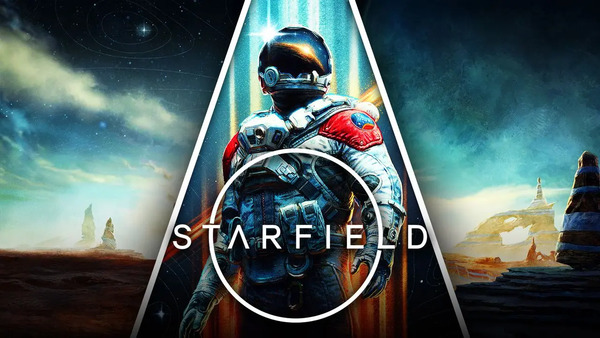In the realm of drug regulation, Schedule I substances occupy the most restricted category under the U.S. Controlled Substances Act (CSA) of 1970. These drugs are classified as having a high potential for abuse, no currently accepted medical use, and a lack of accepted safety even under medical supervision. Unlike other scheduled drugs (II–V), Schedule I substances are entirely illegal for general use, making them the subject of considerable legal, social, and scientific debate.
This article explores the history, legal implications, public controversies, medical research barriers, and evolving policies surrounding Schedule I drugs. It will also evaluate both the benefits and drawbacks of this classification, offering a full perspective on its place in U.S. drug policy.
1. The Controlled Substances Act and Drug Scheduling
The Controlled Substances Act (CSA) was enacted in 1970 as part of the Comprehensive Drug Abuse Prevention and Control Act. It established a federal framework for regulating drugs based on their potential for abuse, accepted medical use, and safety.
Drug Schedules Explained:
-
Schedule I: No accepted medical use, high potential for abuse
-
Schedule II-V: Accepted medical use with varying abuse and dependence risks
The CSA empowered the Drug Enforcement Administration (DEA) and the Food and Drug Administration (FDA) to determine which drugs belong in each schedule. This decision impacts everything from research permissions to criminal penalties.
2. Criteria for Schedule I Classification
Schedule I substances meet three core criteria:
-
High potential for abuse
-
No currently accepted medical use in the U.S.
-
Lack of accepted safety for use under medical supervision
This classification results in strict legal restrictions, making it nearly impossible for physicians to prescribe these drugs or for researchers to study them without special federal approval.
Common Examples:
-
Heroin
-
LSD (Lysergic acid diethylamide)
-
MDMA (Ecstasy)
-
Psilocybin (magic mushrooms)
-
Cannabis (at the federal level)
3. Historical Context of Schedule I Drugs
Many drugs currently in Schedule I were originally used medicinally or in scientific research before being criminalized.
War on Drugs Influence:
-
In the 1970s and 1980s, U.S. drug policy took a punitive stance.
-
Public fears about addiction, crime, and youth exposure contributed to harsher classifications.
-
President Nixon declared drugs “public enemy number one,” launching the War on Drugs.
Drugs like cannabis and LSD, once subjects of promising medical and psychiatric studies, were reclassified, halting research for decades.
4. Legal and Criminal Implications
Possession, sale, or manufacture of Schedule I drugs is considered a federal crime, often resulting in felony charges and lengthy prison sentences.
Federal Penalties:
-
Simple possession can result in up to 1 year in prison and fines
-
Distribution or trafficking can carry penalties of 5–40 years or more, especially with aggravating factors
-
Mandatory minimums still apply for certain drug offenses
These laws disproportionately affect marginalized communities, contributing to mass incarceration and a growing debate about sentencing reform.
5. Medical and Scientific Barriers
One of the most controversial aspects of Schedule I classification is how it hinders medical research.
Research Restrictions:
-
Researchers must obtain DEA Schedule I licenses, a lengthy and difficult process
-
Limited supply of approved Schedule I substances for testing
-
Institutional Review Board (IRB) and FDA approval required in tandem
This has created a Catch-22 situation: drugs are Schedule I because they lack medical evidence, but evidence can’t be produced because research is nearly impossible.
6. The Case of Cannabis
Perhaps the most controversial Schedule I drug is cannabis. Despite its classification, marijuana is legal for medical use in over 30 U.S. states and for recreational use in more than 20.
Contradictions in Law:
-
Federal law still classifies cannabis as Schedule I
-
State laws contradict this, creating legal ambiguity
-
Businesses in legal states face banking, tax, and interstate trade issues
Advocates argue that cannabis should be rescheduled or de-scheduled due to its medicinal uses in treating epilepsy, chronic pain, and more.
7. Psychedelic Renaissance and Decriminalization Efforts
In recent years, substances like psilocybin, LSD, and MDMA have shown promise in treating depression, PTSD, and addiction.
Recent Developments:
-
Johns Hopkins and MAPS have published promising studies on psychedelics
-
Oregon and Colorado have decriminalized psilocybin for therapeutic use
-
FDA granted "Breakthrough Therapy" designation to MDMA and psilocybin
This emerging science is fueling a push to reclassify certain psychedelics, especially in clinical settings.
8. Ethical and Public Health Considerations
The Schedule I system raises ethical questions about how risk is evaluated and who decides what’s “medically acceptable.”
Public Health Issues:
-
Overcriminalization harms public health by stigmatizing drug use
-
Harm reduction advocates argue for safer, regulated use rather than prohibition
-
Incarceration vs. Treatment: Critics say addiction should be addressed as a medical issue, not a criminal one
Schedule I laws often lag behind current science and societal attitudes, creating tension between federal policy and modern health approaches.
9. Future of Drug Scheduling and Policy Reform
There is growing momentum for Schedule I reform, including bipartisan support for rescheduling or de-scheduling certain drugs.
Policy Proposals:
-
Rescheduling Cannabis to Schedule II or III
-
Decriminalization of psychedelics for therapeutic use
-
Streamlining research applications to reduce bureaucratic hurdles
-
Expungement and clemency for non-violent drug offenses
As public opinion shifts and scientific studies mount, the future of Schedule I may involve more nuanced classifications, or a complete overhaul of the CSA structure.
Conclusion
Schedule I drugs remain at the center of American debates over drug policy, public health, and scientific freedom. While the classification was designed to protect the public, it has also blocked research, fueled mass incarceration, and created contradictions between federal and state law.
As evidence emerges supporting the medical potential of certain Schedule I substances, particularly cannabis and psychedelics, the system is under increasing pressure to evolve. True progress will depend on balancing safety, access, and scientific rigor—while acknowledging the societal costs of prohibition-based models.
Whether through rescheduling, decriminalization, or deeper reforms, the next decade is likely to bring major changes to how the U.S. handles Schedule I drugs.



























